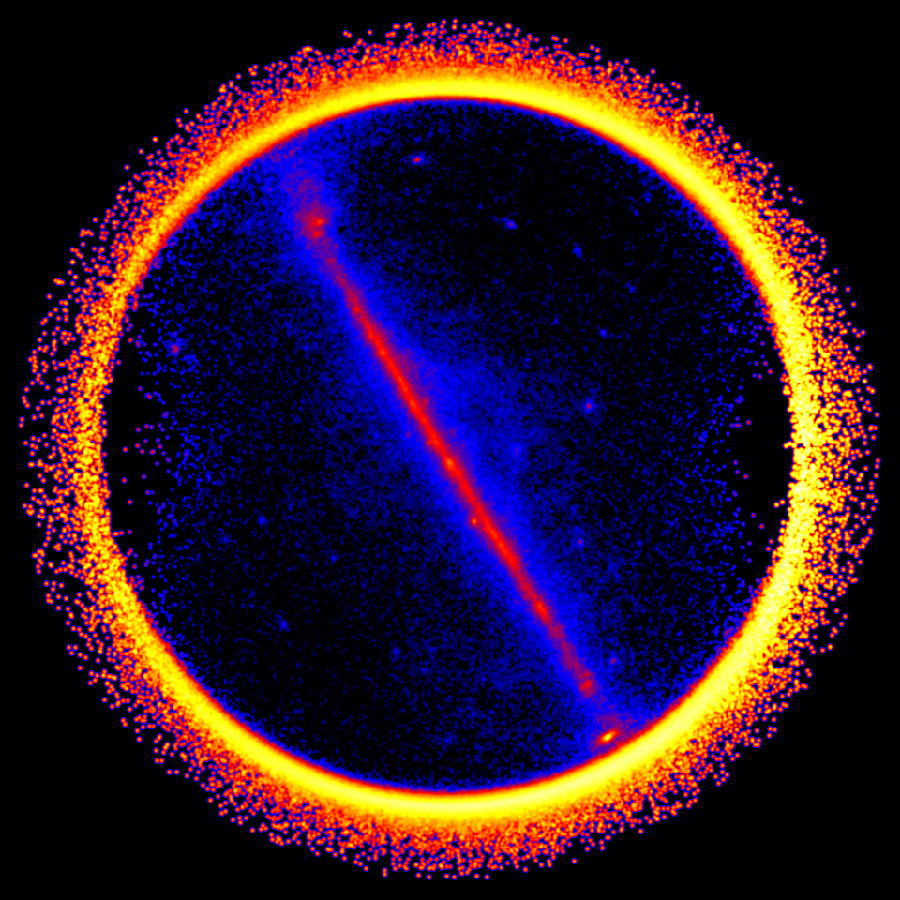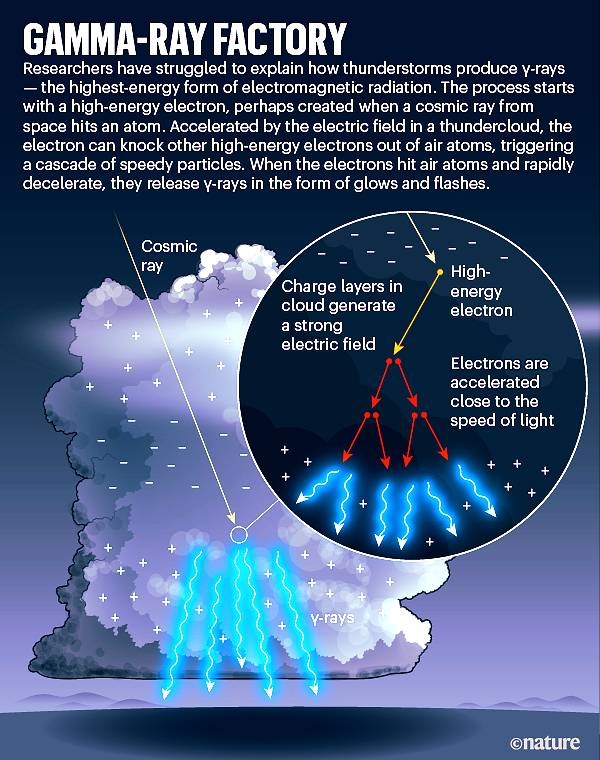
Explanation: For an Earth-orbiting gamma ray telescope, Earth is actually the brightest source of gamma rays, the most energetic form of light. Gamma rays from Earth are produced when high energy particles, cosmic rays from space, crash into the atmosphere. While that interaction blocks harmful radiation from reaching the surface, those gamma rays dominate in this remarkable Earth and sky view from the orbiting Fermi Gamma-ray Space Telescope's Large Area Telescope. The image was constructed using only observations made when the center of our Milky Way galaxy was near the zenith, directly above the Fermi satellite. The zenith is mapped to the center of the field. The Earth and points near the nadir, directly below the satellite, are mapped to the edges of the field resulting in an Earth and all-sky projection from Fermi's orbital perspective. The color scheme shows low intensities of gamma-rays as blue and high intensities as yellowish hues on a logarithmic scale. Our fair planet's brighter gamma ray glow floods the edges of field, the high intensity yellow ring tracing Earth's limb. Gamma ray sources in the sky along the relatively faint Milky Way stretch diagonally across the middle. Launched June 11, 2008 to explore the high-energy Universe, this week Fermi celebrated its 2,000th day in low Earth orbit. (underline added) (source - http://apod.nasa.gov/apod/)
Gamma-ray energies have photons with over 100 million electron volts. In comparison visible light photons have energies of about 2 electron volts. [NASA]

Alpha radiation consists of helium nuclei and is readily stopped by a sheet of paper. Beta radiation, consisting of electrons or positrons, is halted by an aluminum plate. Gamma radiation is dampened by lead.
Gamma-rays - are the frequency of DC current. [see Westinghouse Electromagnetic Chart wherein this relationship is shown.]
Begins at 63rd octave = 9,223,372,036,854,775,808 Hz [See Scale of the Forces in Octaves]
Gamma rays (also called gamma radiation), denoted by the lower-case Greek letter gamma (? or ?\gamma ), are penetrating electromagnetic radiation of a kind arising from the radioactive decay of atomic nuclei. It consists of photons in the highest observed range of photon energy. Paul Villard, a French chemist and physicist, discovered gamma radiation in 1900 while studying radiation emitted by radium. In 1903, Ernest Rutherford named this radiation gamma rays. Rutherford had previously discovered two other types of radioactive decay, which he named alpha rays and beta rays.
The decay of an atomic nucleus from a high energy state to a lower energy state, a process called gamma decay, produces gamma radiation.
Gamma rays ionize atoms (they are ionizing radiation), and are thus biologically hazardous. Wikipedia, Gamma Ray

Gamma rays are the highest energy EM radiation and typically have energies greater than 100 keV, frequencies greater than 10^19 Hz, and wavelengths less than 10 picometers. [source unknown]


Russell
"The reverse of this principle applies in depolarizing bodies. Depolarizing bodies on the radioactive half of any cycle project time accumulations from them at tremendous speeds. Helium and other inert gases explode outwardly from tungsten at approximately half the "speed of light" while similar "rays" explode outwardly from radium, actinium, thorium, uranium and uridium at almost the speed of light.
Conversely, generoactive rays explode inwardly at tremendous speeds in the first three invisible octaves. Alpha, beta, gamma and "cosmic" rays explode inwardly to center invisible generating matter as they and the older inert gases explode outwardly from degenerating visible matter." [Walter Russell, A New Concept of the Universe, pages 112-117]
See Also
Alpha Particle
beta particle
Cosmic Rays
First Four Octaves - page 89
Radioactivity
15.08 - Dissociating Water with X-Rays - Radiolysis
terrestrial gamma-ray flashes
